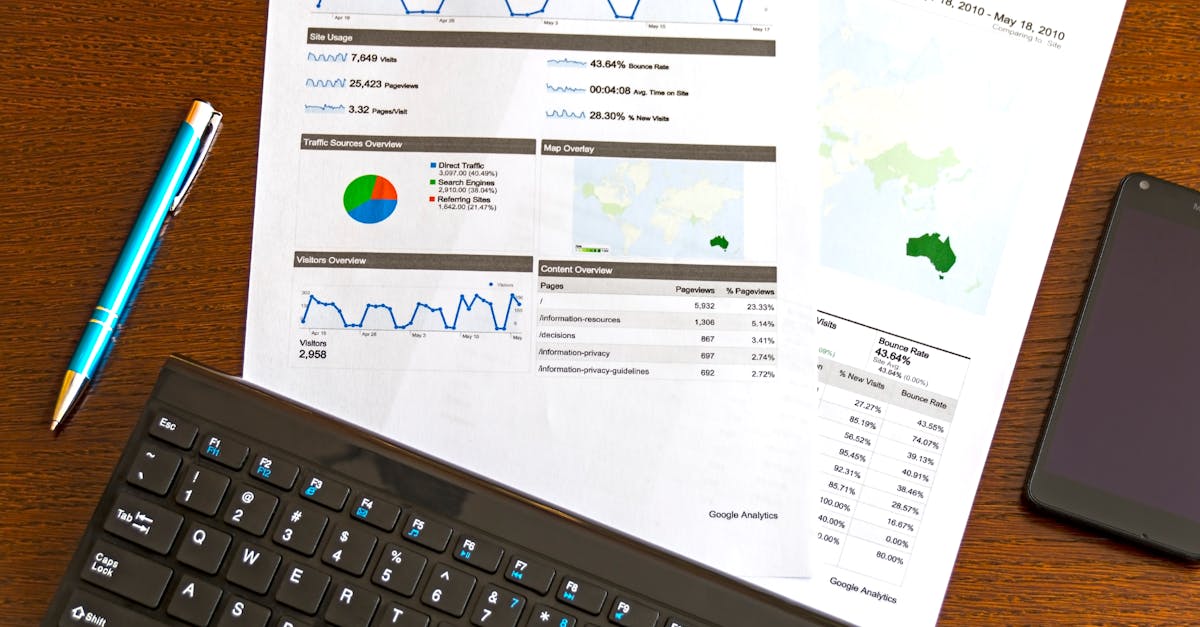If you’re leading revops, marketing, or operations in 2025, then you already know the old playbooks are out. Buyers expect instant, hyper-relevant engagement across every touchpoint — and teams are under pressure to do more with less. At Your HS Expert, we’ve spent countless hours simplifying, optimizing, and scaling HubSpot for B2B teams just like yours, so you can consistently deliver the personalization modern buyers demand, without burning out. In this blog, we’re going deep on how to actually leverage HubSpot’s AI marketing features to move beyond generic campaigns and create truly personalized customer engagement — all with tactical, road-tested advice.

Why Personalized Engagement Isn’t Optional Anymore
We see it every day: The emails, ads, and web experiences that win attention are the ones that anticipate what your audience needs, when they need it. With B2B buyers expecting the same tailored treatment as B2C consumers, no team can afford to rely on static lists or blanketed messaging anymore. HubSpot’s AI is designed to deliver personalization at scale—without needing an army of marketers or ops staff. But to fully harness it, you need more than just surface-level automation. Success comes from understanding the underlying data, leveraging dynamic AI tools, and making sure every customer interaction feels individually crafted.
How HubSpot’s AI Marketing Features Empower Personalization (2025 Edition)
Let’s dig into the specific features and strategies actually driving results for growth-minded teams this year.
1. Dynamic Segmentation with AI-Powered Audiences
Gone are the days of clunky static lists. HubSpot’s Segments tool blends known contact profiles and anonymous web visitors into live, ever-evolving audiences. This means your outreach and nurture tracks stay tightly in sync with each person’s real-world behavior and intent, not outdated list membership.
- Move static lists to Segments: Review your key buyer personas and migrate your highest-priority static lists into dynamic segments driven by engagement (site visits, form fills, downloads, etc).
- Set up real-time triggers: Create triggers for timely actions (for instance, notify the sales team when a dormant lead suddenly becomes highly active).
- Rethink campaign timing: Segments update constantly—so your nurture, re-engagement, and cross-sell workflows hit the right person at the right time, not 2 weeks too late.
2. The Personalization App: Automated, Targeted Experiences
This is what unlocks true scale for personalization. With the Personalization app, you can:
- Deliver variant-rich content: Easily spin up multiple versions of landing pages, emails, or CTAs from a central dashboard, targeting segments based on lifecycle stage, firmographics, or behavior.
- Use AI for copy & image suggestions: AI helps generate, test, and refine messaging to maximize relevance for each audience group. No more endless manual A/B tests.
- Automate decision logic: Assign rules for who sees what content, ensure data-driven personalization, and minimize content management headaches.
- Monitor conversion lift: AI tracks what’s working (and what’s not) so you can continuously optimize at the pace your buyers expect.
We recommend prioritizing personalization for major conversion points: demo requests, pricing pages, customer onboarding flows, and core nurture tracks. A single relevant tweak at these points can multiply engagement and pipeline lift.
3. AI-Powered Content & Campaign Execution with Marketing Studio
Marketing Studio is now a collaborative hub—for both human and AI-powered marketing work. Here’s how to use it effectively:
- Plan multichannel journeys: Drag-and-drop campaign elements across email, ads, web, events, and more—all on a unified strategy board.
- Lean on AI for strategy: Take AI’s recommendations for campaign sequencing, send times, and channel mix; use human insight for creative direction.
- Coordinate faster with your team: Use built-in commenting and assignments, which keep everyone synced on asset creation, approval, and launch timelines.
- Connect to reporting: AI tracks campaign performance in real time, so you spot opportunities and bottlenecks immediately—not at quarter’s end.
4. Smarter, Hyper-Personal Emails with AI
Email isn’t dead, it’s just evolving. HubSpot’s AI-driven email engine lets you:
- Draft tailored emails instantly: Generate drafts by feeding in campaign goals, contact properties, and segment profiles. Save hours writing repetitive outreach.
- Auto-personalize at scale: Dynamic tokens now support not just name/company, but persona-driven messaging, industry context, and behavioral insights.
- Optimize subject lines & timing: AI analyzes engagement patterns to suggest the right send windows and micro-segmented subject lines for maximum open rates.
- Predict engagement outcomes: Machine learning anticipates what content blocks are most likely to drive clicks and conversions, so you can keep optimizing across every campaign.
Try piloting the AI Email engine on an underperforming nurture workflow first. Benchmark results, iterate, then roll out to other lifecycle programs gradually—this wins internal buy-in and avoids analysis paralysis.

Integrating AI Tools for a Seamless Customer Experience
AI on its own isn’t a magic bullet. Winning teams combine these features with robust data practices, clean CRM architecture, and process alignment across sales, marketing, and customer success. If you’re just starting out, consider a data governance review (see our in-depth guide here) to ensure you’re not personalizing on top of messy data. And if segmentation is still siloed across multiple tools, prioritizing integration is crucial (see: how to break down data silos in HubSpot).
AI Marketing in Action: Practical Playbook
- Step 1: Audit your existing customer journeys. Map out each touchpoint where personalization could have the most impact. Focus on hand-offs between sales and marketing, and key conversion events.
- Step 2: Consolidate and cleanse your data. Ensure all relevant behavior, demographic, and firmographic data are synced and accurate within HubSpot.
- Step 3: Build dynamic segments and test initial personalization. Start with a single high-value workflow (like demo request follow-up) to pilot segmentation and the personalization app.
- Step 4: Layer AI-powered email and asset creation. Apply learnings as you expand to more campaigns—monitor, optimize, repeat.
- Step 5: Review performance and align with revenue goals. Keep marketers, sales, and leadership in the loop with clean dashboards that surface both engagement and bottom-line metrics. Here’s how to align reporting with revenue objectives.
What Teams Get Wrong — And How to Fix It
- Misaligned personalization efforts: Teams often personalize at the wrong level (too granular or too vague). Start with the moments that matter most to your buyer (first meeting booked, onboarding, contract renewal) and build up from there.
- Overreliance on AI with poor data: No amount of AI-driven messaging can rescue a portal bogged down by duplicates or outdated fields. Begin every personalization initiative with a data cleanup.
- Sprawling manual exceptions: If your team spends hours each week overriding automations, it’s time to revisit your workflows. Use HubSpot’s AI to standardize processes, freeing your team for creative work and high-touch interactions. Read more on eliminating manual data work.
Getting Buy-In and Scaling AI Across the Org
Adopting AI in HubSpot is as much about change management as technology. Get buy-in by:
- Sharing early results in terms of time saved or engagement lifts (AI-driven emails, for example, often see noticeable open/click lift when well-targeted).
- Training teams on interpreting and using AI suggestions—help them understand the why behind new automations or segment shifts, not just the how.
- Standardizing onboarding for new team members so they’re comfortable with both the “human” and “machine” sides of your GTM motions.
Consider ongoing admin support for continuous optimization. As you scale, business requirements and buyer expectations evolve quickly — and AI tools themselves are updated regularly. Leveraging experts (internal or external) ensures you don’t lose momentum.
Put It All Together: Action Steps for 2025
- Start small, iterate often. Pick a single segment, asset, or workflow and apply AI-driven personalization.
- Keep the human touch. Use AI for what it does best (data processing, pattern recognition, scalable asset deployment) and human insight for strategy, messaging voice, and creative problem-solving.
- Monitor, measure, optimize. Set clear KPIs — not just for opens or clicks, but for conversion and revenue impact. Use real-time dashboards to track.
- Invest in enablement. Make sure both marketing and sales are trained to leverage new features. Review and update SOPs regularly.
Personalized AI marketing isn’t about replacing your team—it’s about making them massively more effective, efficient, and empowered. The companies that win in 2025 won’t be those sending more emails, but those sending the right message to the right person at the right moment. Ready to get started? Book a free HubSpot Discovery Session and let’s map your next big AI marketing win together.
Frequently Asked Questions
What does HubSpot’s AI actually personalize?
HubSpot’s AI personalizes emails, landing pages, CTAs, workflows, and audience segmentation. It tailors messaging by dynamically analyzing each contact’s behavior, interests, and lifecycle stage, making experiences more relevant at scale.
Is AI-driven personalization only for big enterprises?
No. With HubSpot’s built-in tools, B2B SaaS, professional services, and ecommerce businesses of any size can launch AI-powered campaigns. The key is setting up segments, workflows, and data foundations properly — then scaling up as you grow.
Will using AI make our marketing less human?
Not if it’s implemented thoughtfully. AI automates the repetitive, rules-based parts of personalization, so your team can spend more time on custom strategy, creative storytelling, and direct customer engagement.
How do I measure the impact of AI-powered personalization?
Monitor metrics like engagement (opens, clicks), conversion rates, pipeline velocity, lead quality, and ultimately revenue impact. HubSpot’s dashboards can track performance at both the campaign and contact level. For more reporting strategies, see this guide to aligning HubSpot reporting with revenue goals.
Where should I begin?
Start by reviewing your data health, segmenting your highest-value audiences, and piloting AI-powered nurture or onboarding campaigns. Consider leveraging a tailored HubSpot Discovery session to get expert, unbiased advice before making large-scale changes.

